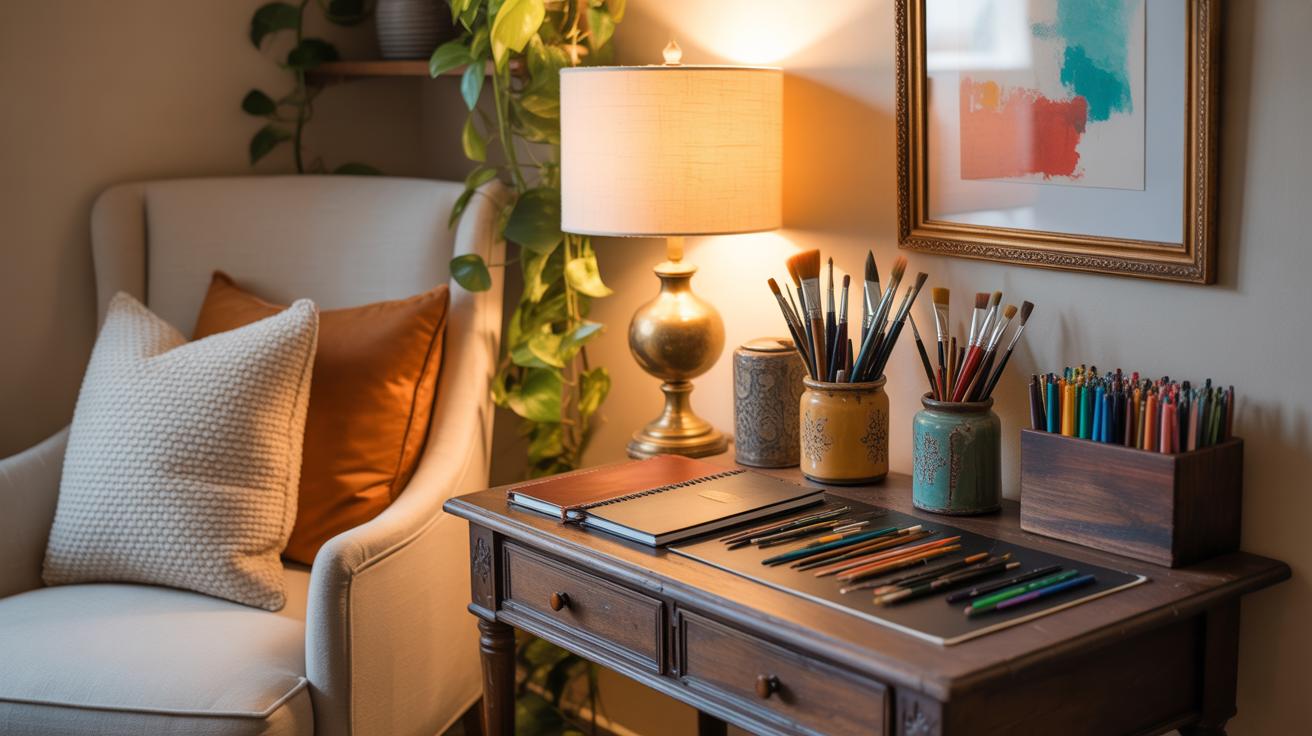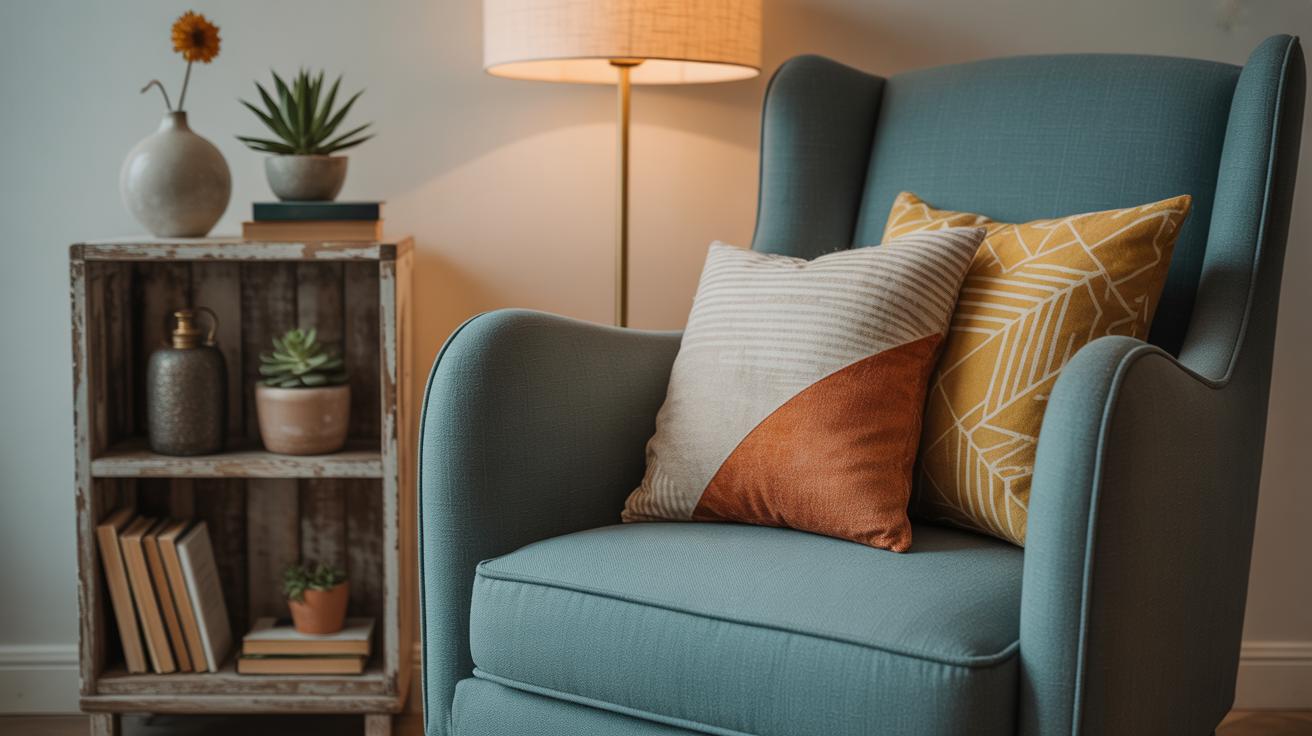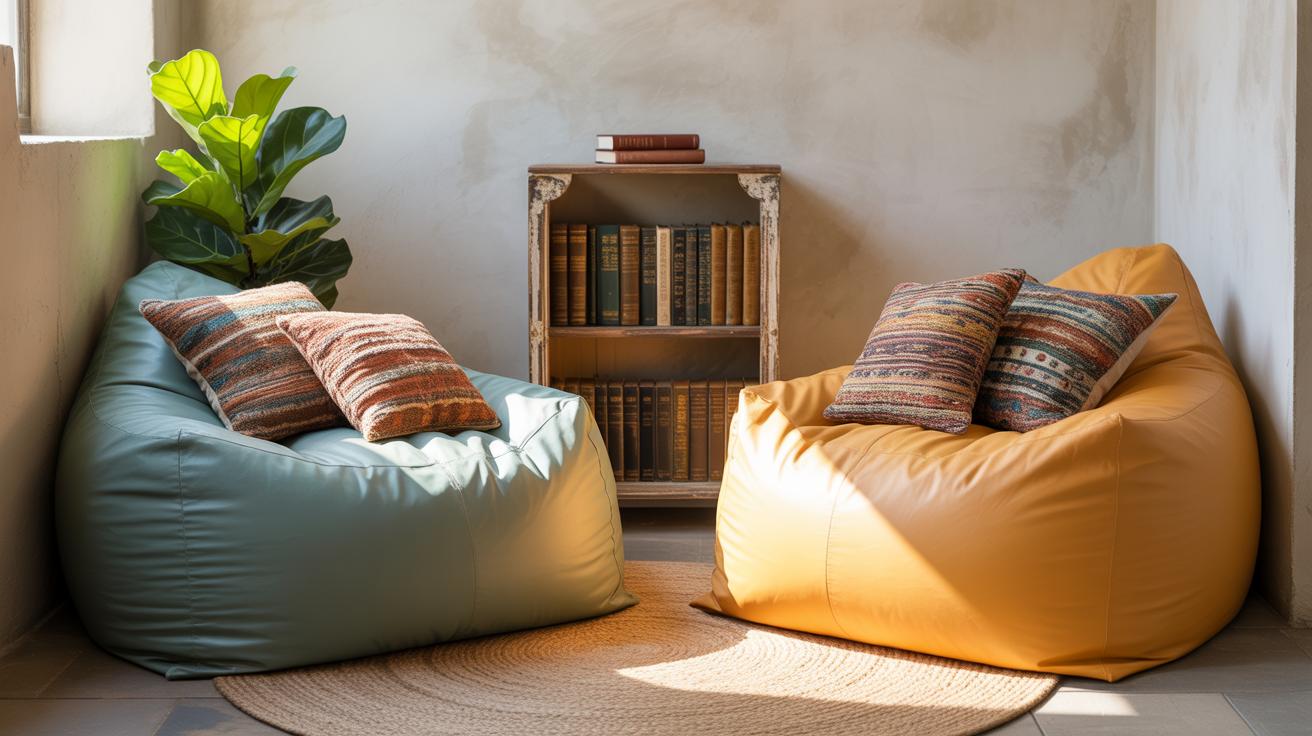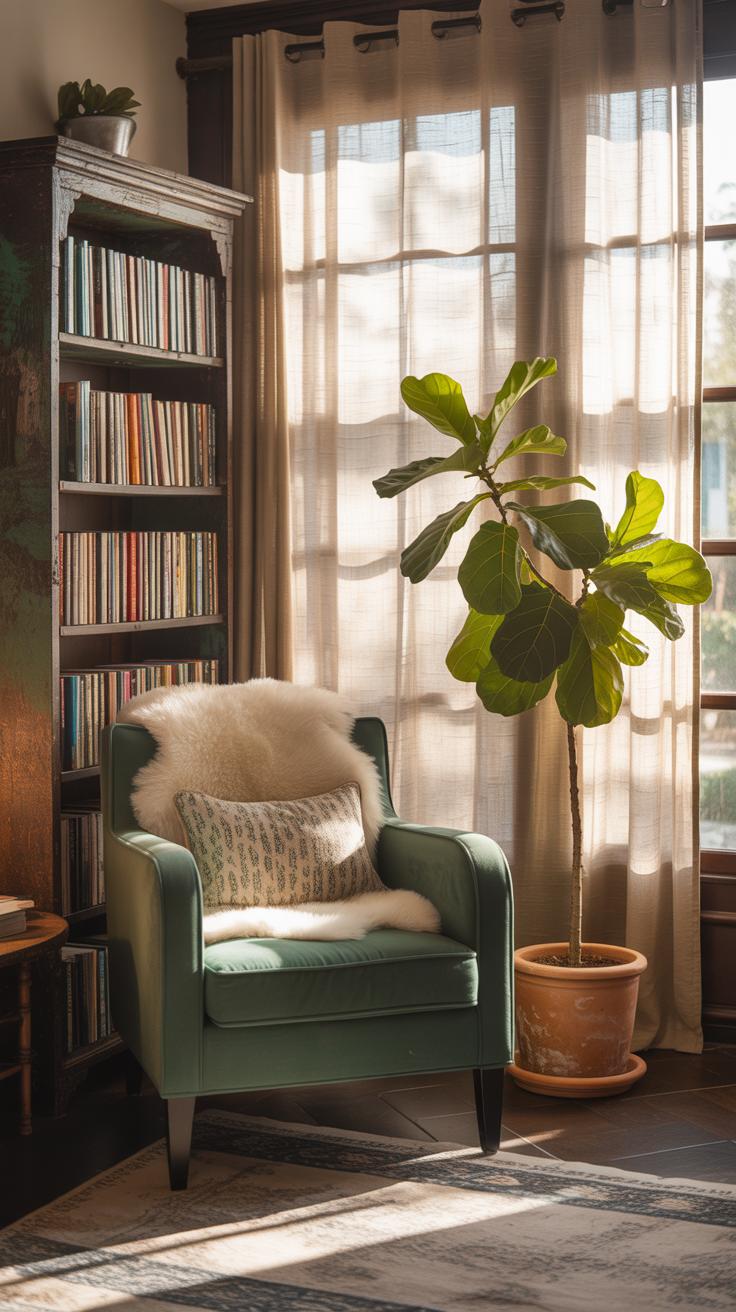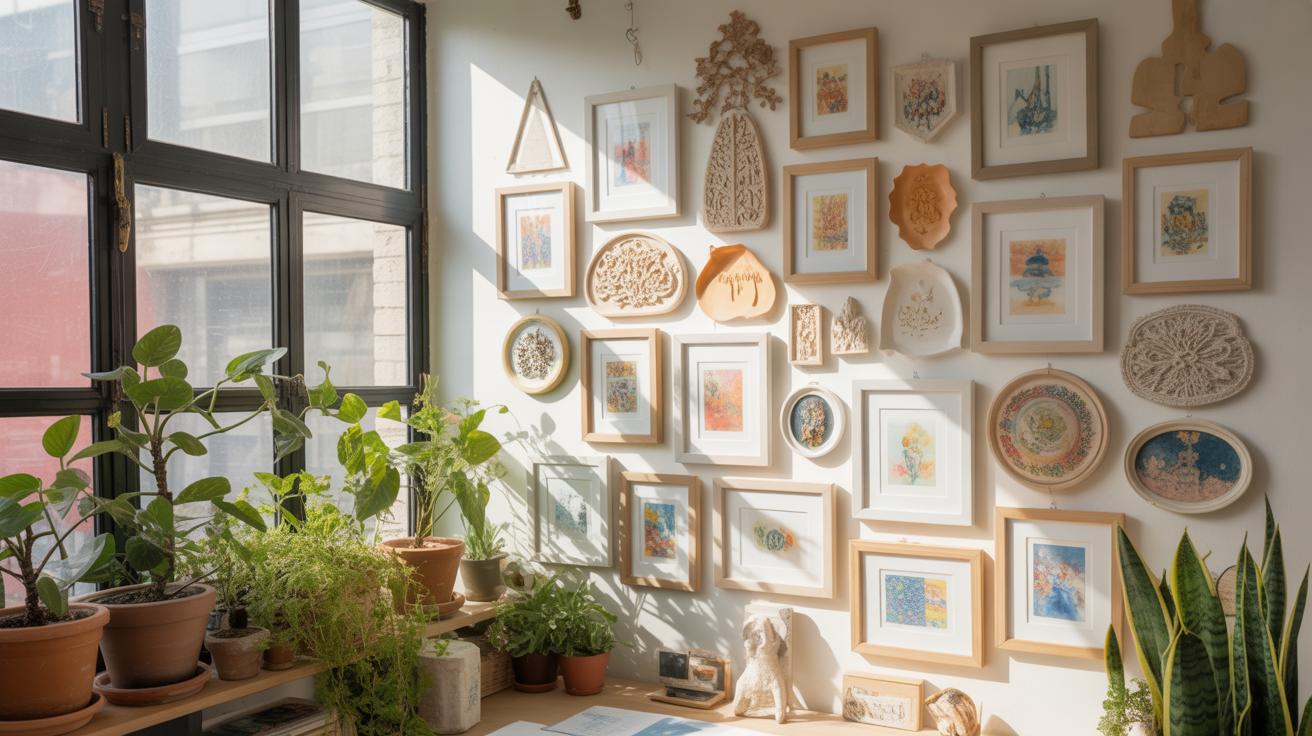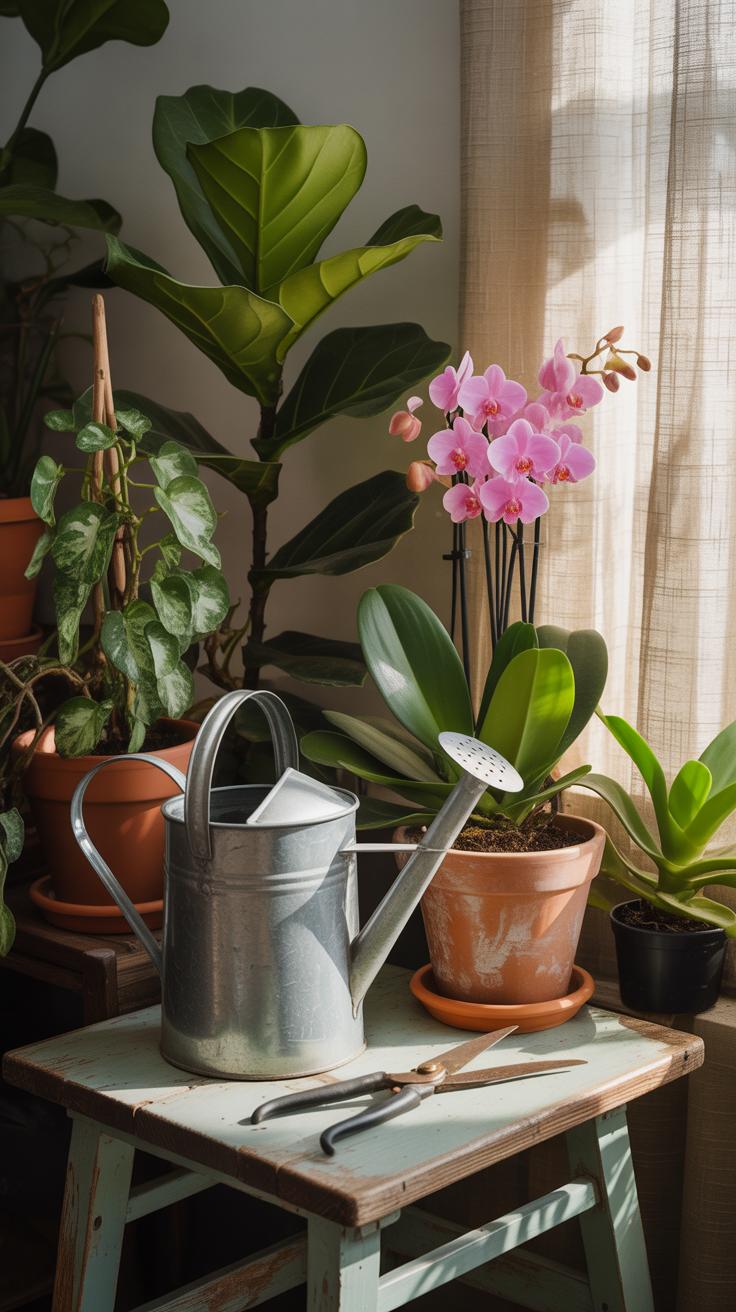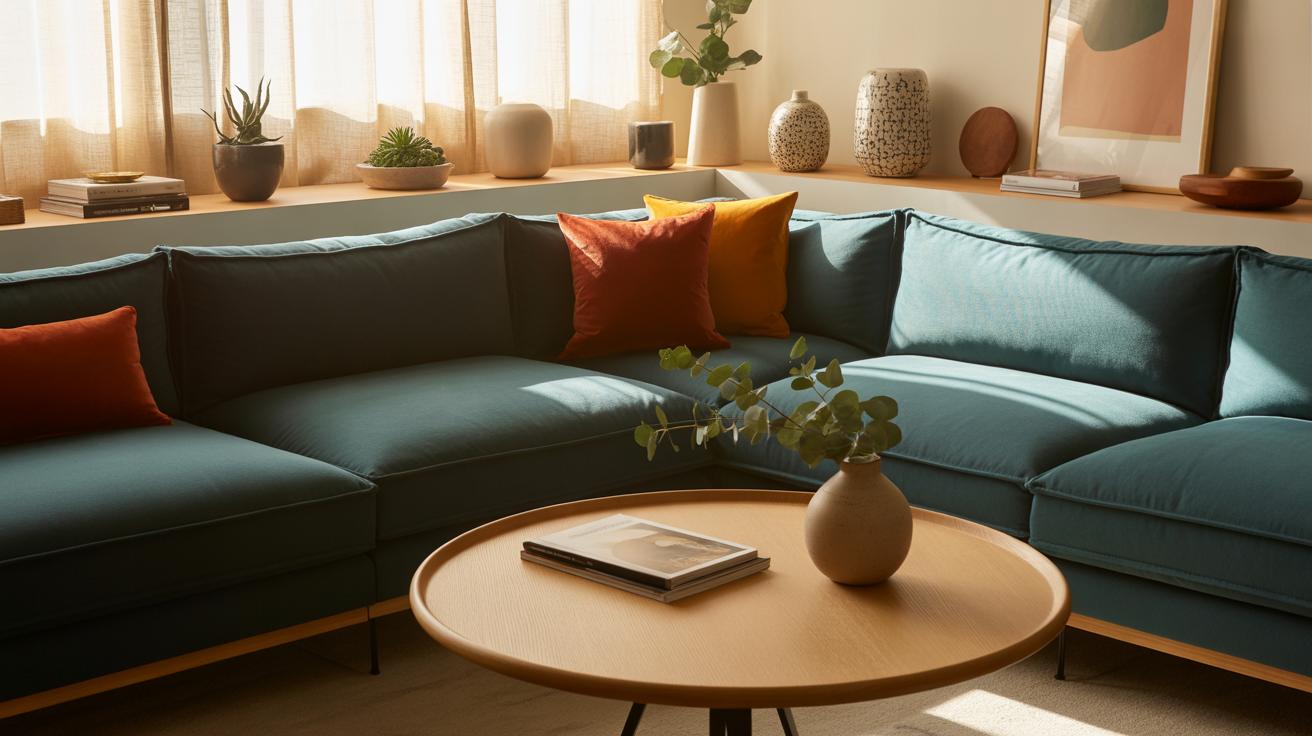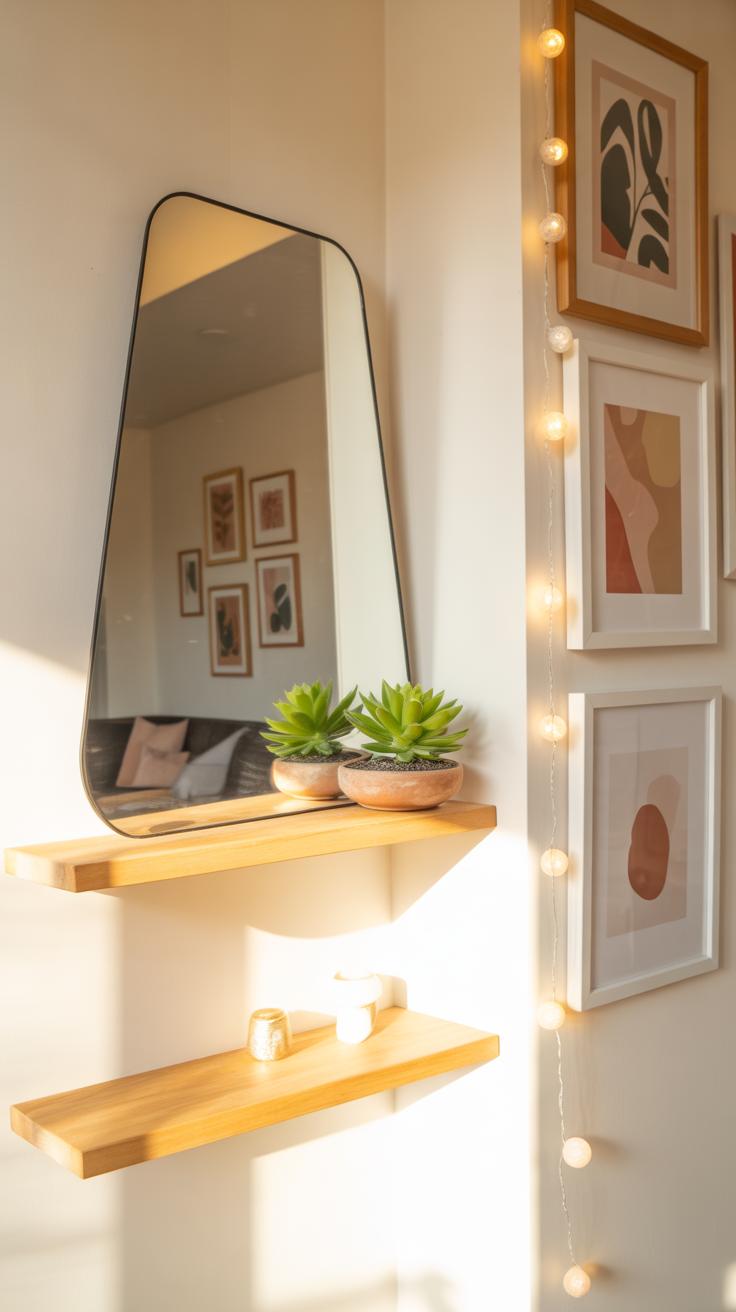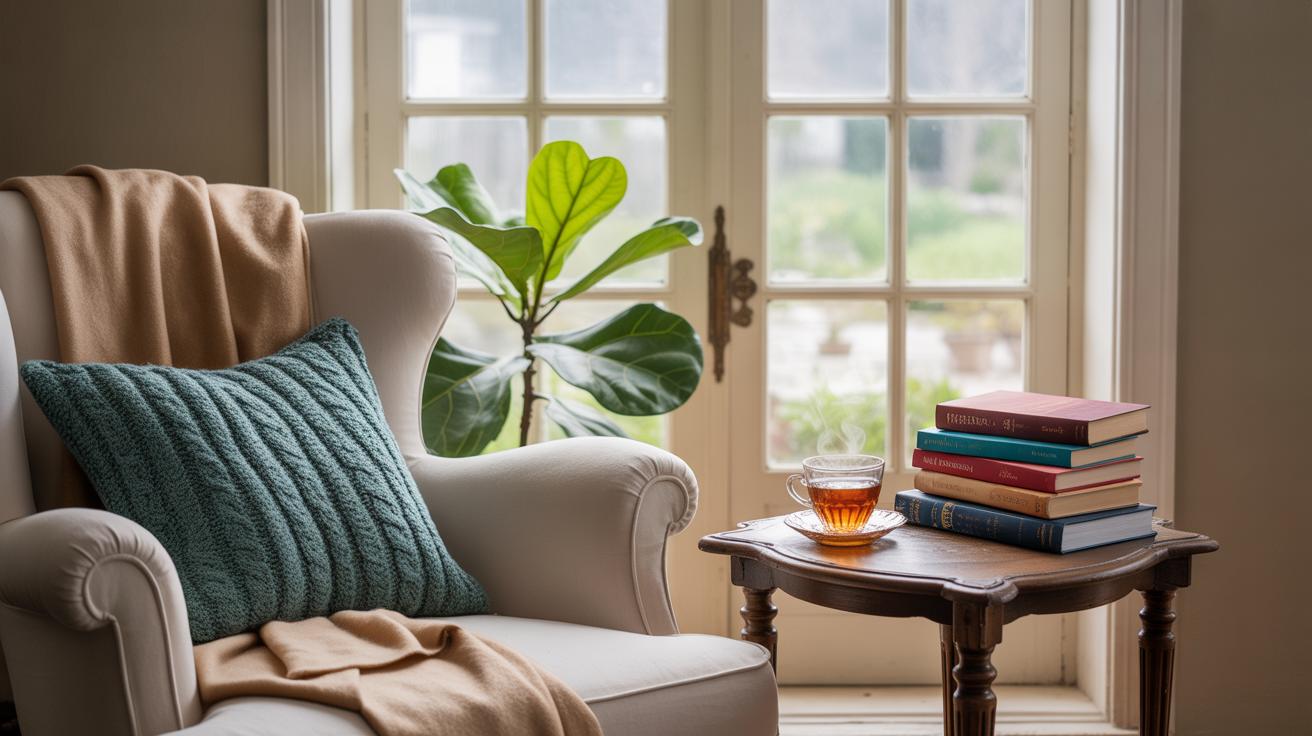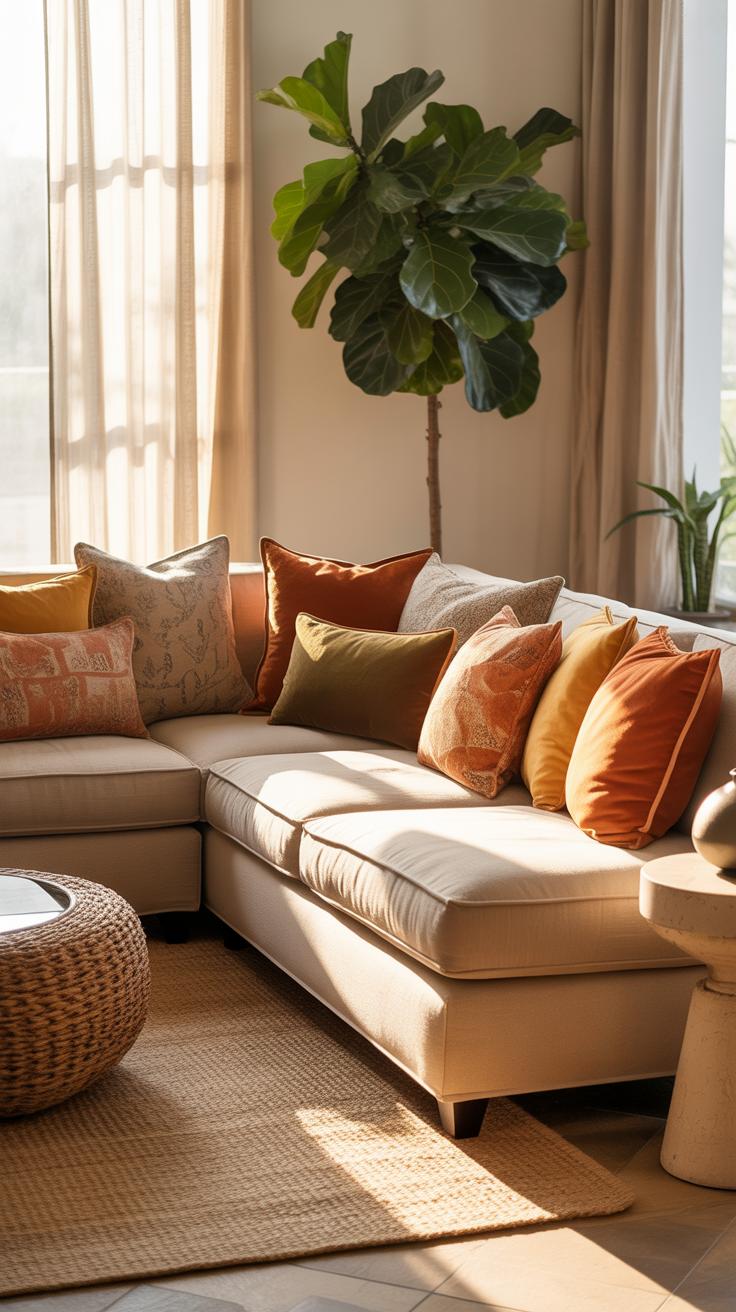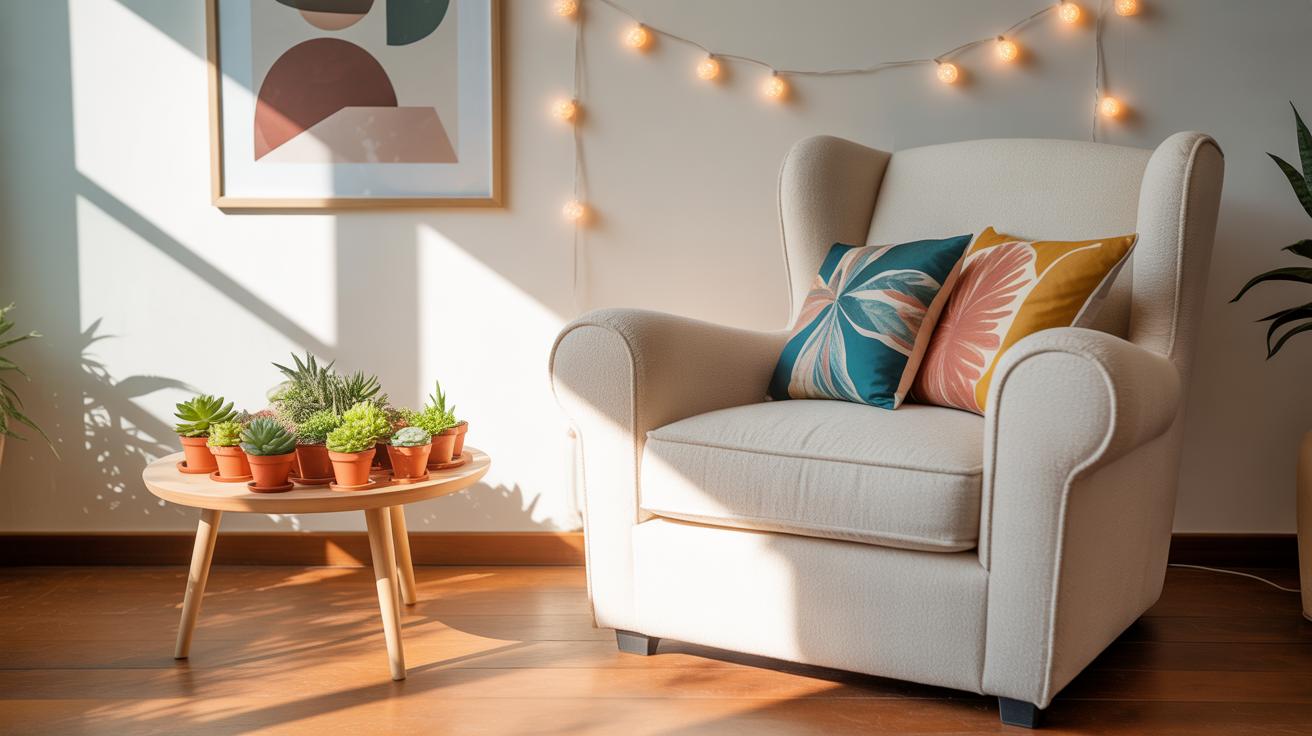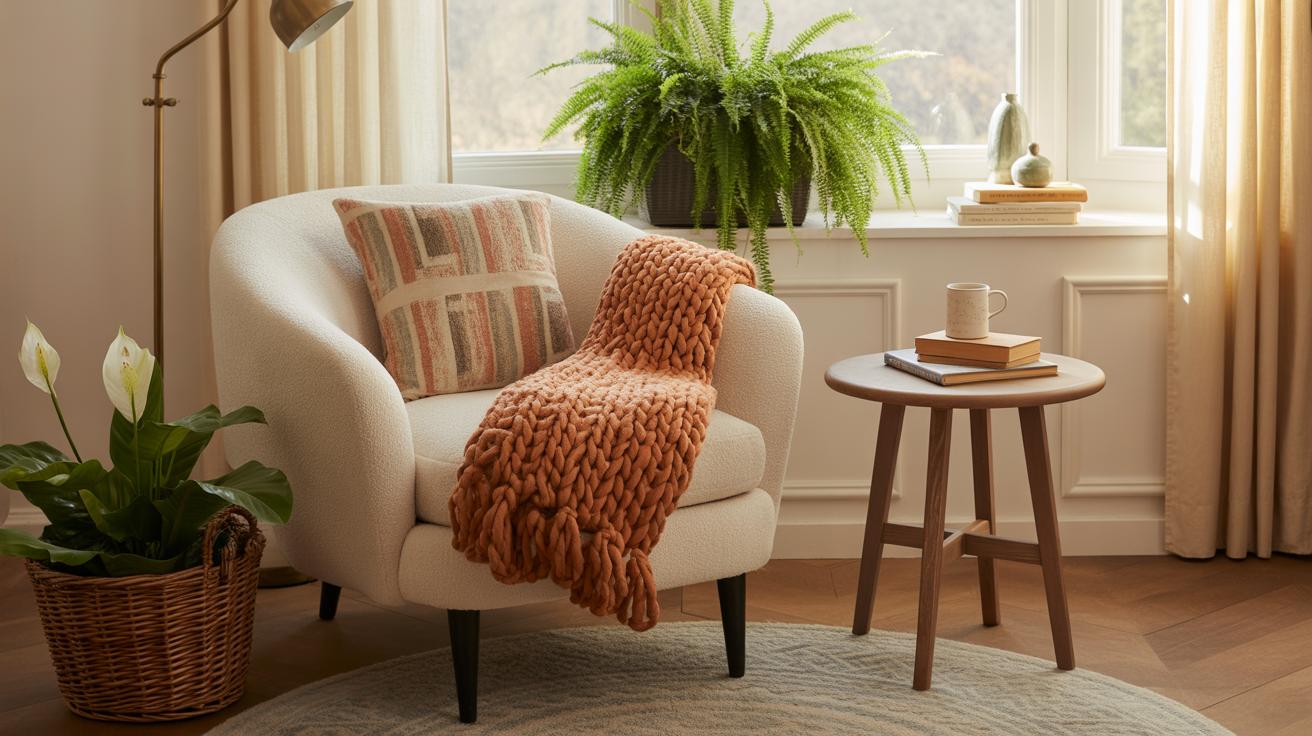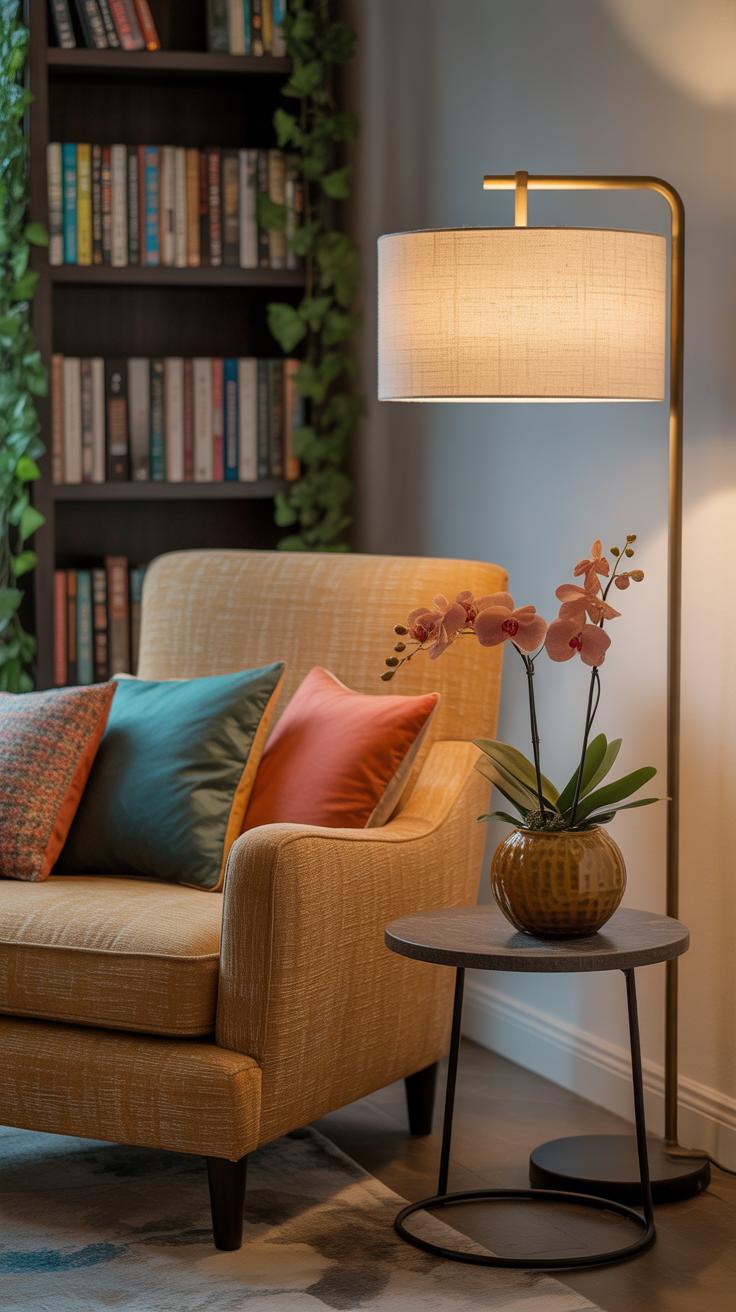Introduction
Room corners often remain empty or overlooked, yet they hold great potential to enhance your home’s style and comfort. Using the right decor ideas can transform these underused spaces into cozy, inviting spots. This article presents practical and approachable room corner decor ideas for cozy room decor inspiration, helping you make the most out of every nook and cranny.
You will learn how to select suitable decor pieces, step-by-step ways to redesign your room corners, and tips for creating a warm, welcoming atmosphere. Whether you want a reading nook, a plant corner, or a stylish display, these ideas will guide you to refresh your living space effectively and enjoyably.
Choosing Corner Decor Essentials
Picking the right items for room corners can be surprisingly tricky. You want things that fit without making the space feel cluttered, which means size really matters. Smaller pieces tend to work better, but that doesn’t mean you should shy away from something with presence. Think about furniture that’s scaled down, like a petite chair or a slim shelving unit that slides into corners easily.
Lighting changes everything in a corner. A floor lamp with a narrow base can add height without crowding. Or maybe string lights casually draped along the walls create a softer ambiance—perfect if you want that cozy feel. Wall sconces also save floor space, offering gentle illumination without overwhelming the nook.
Plants are another corner favorite. Tall ones with upward growth or hanging varieties avoid taking too much room sideways. They bring life without being invasive. Don’t forget smaller decorative objects like vases, framed photos, or sculptures, but keep quantity limited—you want the corner to breathe, not overflow.
When selecting, think about how each piece complements the whole room. Colors, materials, and shapes should blend, but contrast adds interest too. It’s a balancing act, really. The goal is to enhance the corner’s character without making it a visual block or an afterthought.
Picking the Right Furniture for Corners
Measuring is step one, always. You’ll want to know the exact space available before settling on a chair, shelf, or desk. Corners vary a lot—some might be wide enough for a cozy reading chair, others just big enough for a narrow table.
Small chairs can make a corner feel inviting without dominating the room. A compact armchair or even a cushioned stool might work better than a bulky recliner. Shelves that fit snugly into a 90-degree angle offer storage or display space, often freeing up other parts of the room.
Corner desks are clever for small rooms or work-from-home spots, squeezing productivity into underused space. But they need thoughtful placement—too close to walkways, and they disrupt traffic flow. Your furniture should fit the corner perfectly but also respect how you move through the room.
Selecting Lighting to Brighten Corners
Lighting in a corner sets the tone. Floor lamps with slim profiles highlight the spot without stealing too much space. Taller lamps can draw the eye upward, adding dimension. String lights, though, bring a casual warmth that’s hard to replicate; they suggest comfort, like inviting you to linger there.
Wall sconces are practical and decorative, attaching directly to the wall and keeping the floor space open. They can provide task lighting for reading corners or simply add a soft glow that makes the whole room feel more intimate.
Keep in mind, lighting isn’t just about brightness—it’s about usability and mood. Too harsh, and the corner feels clinical. Too dim, and it becomes underused. Ideally, you want a mix that adjusts to your needs—bright enough for tasks, soft enough for relaxing.
Preparing your corner space
Before you jump into decorating your room corner, it’s crucial to clear everything out first. Sometimes, clutter builds up without us noticing, and it can be a bit overwhelming to face at once. Take your time to remove all items in and near the corner—books, plants, leftover decor pieces, or even furniture that might be crowding the space. You’ll want a completely clean slate to see what you’re really working with.
Once cleared, give the walls and floor a good wipe or vacuum. Dust and smudges can change how your corner feels and look in photos or in person. This step often gets overlooked, but clean surfaces can inspire fresh ideas and prevent mistakes like bad color choices hiding behind grime.
Next, examine the corner carefully. Look for any signs of wear on the walls: chipped paint, cracks, or holes. These might affect the type of decor you choose or whether you should do some repair before adding anything new. Also, check for electrical outlets and their locations—these can determine where you can place lamps or tech devices. More outlets could mean more options, but fewer might push you to pick more low-maintenance decor.
Don’t forget about natural light. Does sunlight reach the corner? Does it flood the space in the morning or barely touch it until afternoon? This influences plants you might use or if you want cozy lighting supplemented by lamps. The type of walls matters too—plaster versus drywall versus brick can affect what mounting hardware or adhesive to pick. Lastly, measure the floor space carefully. What fits comfortably without crowding? This question can guide whether a chair, a small table, or just a floor cushion will work best.
Creating a reading nook
Start by picking a corner that feels a bit tucked away, a spot you naturally want to retreat to. A snug armchair or a cushioned bench works well—something that makes you want to linger, not just sit briefly. Think about fabrics that feel pleasant to touch, like soft cotton, velvet, or even a textured knit. Cushions aren’t just decoration here; they’re invitations to settle in. A mix of firm and fluffy cushions can support both comfort and posture.
Lighting plays a crucial role. Place a lamp close enough to provide good reading light without glare or harshness. A floor lamp with an adjustable neck or a small table lamp fits nicely. Near the chair, a compact table can hold a cup of tea or glasses, avoiding clutter on the floor. For your books, wall shelves work if space allows, but baskets or neat stacks nearby can give a casual feel. Don’t aim for perfection; sometimes a little mess makes the space genuinely inviting.
Using plants to refresh corners
Plants in corners do more than fill empty space—they can quietly improve your room’s air quality and mood. I’ve noticed that even a small grouping of greenery changes a corner from bland to inviting. They absorb carbon dioxide and release oxygen, which might make your room feel fresher, though whether you notice it day-to-day is hard to say. Still, they offer a calm, natural vibe that artificial decor rarely matches.
For corners, pick plants that don’t need constant attention—snake plants and pothos are easy starters. Both tolerate low light better than most, which is usually the case in corners. If your corner gets some indirect sunlight, spider plants or peace lilies could work well too.
When arranging, think beyond just placing pots on the floor. Try grouping plants at different heights to create depth—maybe a tall plant on the floor, a medium one on a stool, and something small on a shelf or hanging planter. Decorative pots help, too. A simple white ceramic pot can emphasize the green, while woven baskets add texture. Mixing plain and patterned pots can feel natural, but don’t overdo it.
It’s easy to overlook how plants can subtly frame a corner, making it feel less like ‘wasted space’ and more like a cozy nook. The trick is to keep the setup flexible—you might swap out a plant or change the arrangement as light or seasons shift. Does your corner lack life? Maybe trying a few pots will surprise you.
Wall decor options for corners
When decorating room corners, choosing the right wall decor can change the entire feel of the space. Art prints are a popular choice—they bring personality without overwhelming. Pick sizes that complement the corner without crowding it. For example, a tall, narrow print suits tight corners, while a cluster of smaller pieces works well in wider recesses. Leaving enough breathing room around each piece prevents the area from feeling cluttered or chaotic.
Mirrors offer another option that’s both practical and decorative. Placed thoughtfully, they reflect light and give the impression of more space, which can be a lifesaver in smaller rooms. Position mirrors where they catch natural or artificial light, maybe angled slightly to bounce it toward darker areas. Oddly enough, not all corners benefit from mirrors; sometimes, they can add confusing reflections—so test different spots before hanging.
Floating shelves fit naturally into corners and combine function with style. Triangular or L-shaped shelves maximize the odd angles, making those spots useful for storage or display. You might use them for plants, books, or small trinkets. Just be mindful not to overload shelves or place items too close to the wall edges—that can look messy rather than curated. Mixing open shelving with occasional closed boxes or baskets can balance display with tidiness.
Ultimately, the key is balancing scale, spacing, and your personal taste. Experiment with different arrangements—sometimes what feels right is not obvious at first. And maybe, too, sometimes the corner is better left simple, just with one well-chosen piece.
Comparing corner seating choices
When it comes to filling a corner with seating, the choice often boils down to armchairs, benches, or poufs. Each offers a different take on comfort, space, and style, so it’s worth thinking about what you really need before buying.
Armchairs versus benches for corner seating
Armchairs bring individual comfort. They tend to be cozy, with back and arm support that invites you to settle in with a book or a cup of tea. The downside? They usually take up more room, which might feel cramped if your corner is small. Also, because they’re more sculptural and bulky, they can dominate the corner visually, which might overshadow other decor elements.
On the other hand, benches can offer flexibility. You can seat more than one person, and they tend to be lower-profile, making a corner feel open rather than boxed in. Still, benches sometimes lack the plush comfort of an armchair. Without a back or arms, they can feel more functional than relaxing unless you add cushions or throws. So, if you want something that’s subtle but useful, benches might fit—but for pure comfort, they might not quite hit the mark.
Using poufs for flexible seating
Then there are poufs—those small, often round or square seat cushions that you can move around easily. Poufs shine when you want relaxed, informal seating that doesn’t commit your corner to one look or use. They can add splashes of color or texture, and when you’re not sitting, they can double as footrests or side tables.
Because poufs are lightweight and portable, you can rearrange them on a whim, which is great if your space has multiple functions or if guests pop over unexpectedly. They don’t offer the same support as armchairs or benches, though, so if comfort is your priority, they might serve better as an extra option rather than the main seat. Still, their casual vibe can make a room feel friendly and approachable.
Checklist for corner decor setup
Start with measuring your corner space carefully. You want to avoid overcrowding or leaving the area feeling empty—which can be tricky, right? Take a tape measure and jot down height, width, and depth, then double-check. Sometimes the wall angles or baseboard thickness throw off your initial numbers.
Next, plan your layout around those measurements. Picture the flow—will a chair block a doorway? Can a small shelf fit without feeling cramped? Sketch a rough layout or use an app. It might seem fussier than just guessing, but trust me, it saves headaches later.
When choosing furniture and decor, think balance. Pair a compact chair with a streamlined side table rather than bulky pieces. Let your eye rest between items—avoid jam-packing. For example, instead of stuffing three shelves full, place one statement piece alongside a small plant.
Lighting ties the corner together. Consider adjustable lamps or wall fixtures that highlight your setup without glare. Natural light always helps, but don’t rely on it alone—you probably want something for evenings too.
Finally, arrange your items so the corner feels welcoming but not cluttered. Leave breathing room. Check if the setup invites you to sit, read, or simply pause. Ask yourself: does this corner serve a function and look good, or is it just decoration for decoration’s sake?
Common pitfalls to avoid in corner decor
When working with room corners, it’s easy to trip up on a few common mistakes that can quickly turn a cozy spot into a cramped or neglected area. One frequent error is picking furniture that’s simply too big for the space. That oversized armchair or bulky shelving unit might seem perfect at first glance, but once placed in a corner, it can swallow the area and make it feel tight and awkward. Instead of creating a nook, you may end up blocking pathways or losing usable space.
Another typical pitfall is neglecting proper lighting. Corners tend to fall into shadows, making the room feel gloomy. Without enough light, a corner can seem like an afterthought rather than a useful spot. A simple floor lamp, wall sconce, or even fairy lights can brighten the area and invite use. I’ve found that even small, well-placed lights can completely change how a corner feels—more inviting and less forgotten.
You might ask, how do you recognize these problems early? Look for visual cues: if the corner feels cluttered, too dark, or unused, it’s time to reassess. Try swapping big furniture for smaller, scaled-down pieces or opt for multifunctional items that don’t overwhelm the space. Test lighting options, and don’t hesitate to mix natural and artificial light to see what works—for example, placing a mirror nearby to reflect daylight.
Paying attention to size and light in corners can be the difference between a wasted nook and your new favorite spot. It’s a bit of trial and error, but getting these basics right will make your room corners work for you, not against you.
How to refresh corners on a budget
Corners often get overlooked, but they offer a perfect spot for a little creativity without spending too much. One of the easiest ways to breathe new life into a corner is through simple DIY projects that don’t require fancy supplies. For example, you might create a set of paper lanterns or string fairy lights around a small shelf. These are cheap, quick, and surprisingly effective. Sometimes, a handmade wall hanging or a canvas painted with basic tools can turn a dull corner into something special.
Second-hand finds also hold a lot of potential. A vintage chair, a small trunk, or even an old ladder can instantly give your corner a character update. I once stumbled upon a second-hand store’s clearance section and found a tiny wooden stool, which I gave a fresh coat of paint and now use as a plant holder. It cost me barely a few dollars and made the spot feel much homier.
Repurposing is another thing you might want to try. Have a worn-out cabinet door? Paint it and lean it against the wall as a quirky backdrop. Old fabrics can become cushion covers or cozy throws. Even an unused picture frame can hold pressed flowers or craft paper to hang in that awkward nook. Honestly, small changes like this can invite a whole new vibe to your space without denting your budget. Why not look around your own things before rushing out to buy something new?
Conclusions
Room corner decor can significantly boost your space’s comfort and style. By carefully picking decor elements and following clear steps, you can easily turn empty corners into cozy highlights of your room. Remember, small changes like adding a lamp, cushions, or wall art can invite warmth and personality into your home.
Use these straightforward ideas to make your corners functional and charming. Take your time, experiment, and create a space that feels right for you. With a bit of effort, your room corners will become cozy spots you enjoy every day.



